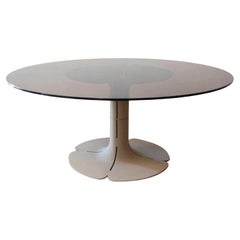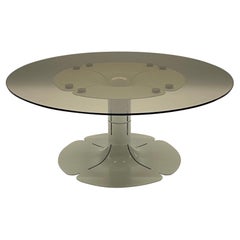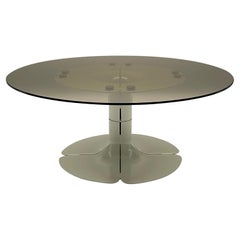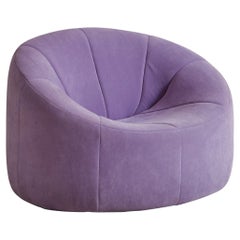Pierre Paulin Alpha
Vintage 1970s French Coffee and Cocktail Tables
Aluminum
Mid-20th Century French Mid-Century Modern Coffee and Cocktail Tables
Aluminum
Mid-20th Century French Mid-Century Modern Coffee and Cocktail Tables
Aluminum
Recent Sales
Vintage 1970s French Chairs
20th Century French Modern Lounge Chairs
Suede, Upholstery
People Also Browsed
Vintage 1980s Italian Mid-Century Modern Flush Mount
Aluminum, Steel, Brass
2010s Italian Mid-Century Modern Loveseats
Suede, Ultrasuede
21st Century and Contemporary Swedish Mid-Century Modern Table Lamps
Textile
Vintage 1970s American Modern Sofas
Chrome
21st Century and Contemporary Italian Mid-Century Modern Wall Lights and...
Brass, Metal
Vintage 1970s Italian Mid-Century Modern Coffee and Cocktail Tables
Chrome
2010s Italian Modern Chandeliers and Pendants
Metal, Brass
2010s Bosnian Mid-Century Modern Daybeds
Fabric, Beech, Velvet
Vintage 1960s Dutch Mid-Century Modern Armchairs
Fabric
Vintage 1970s French Modern Lounge Chairs
Upholstery
Vintage 1950s Italian Mid-Century Modern Shelves and Wall Cabinets
Brass, Steel
Vintage 1970s Italian Space Age Architectural Elements
Composition
Vintage 1960s Italian Modern Floor Lamps
Metal
Vintage 1960s Italian Mid-Century Modern Sofas
Brass
Vintage 1970s Mid-Century Modern Table Lamps
Stainless Steel
Vintage 1970s Italian Other Dining Room Tables
Crystal, Marble
Pierre Paulin Alpha For Sale on 1stDibs
How Much is a Pierre Paulin Alpha?
Pierre Paulin for sale on 1stDibs
Pierre Paulin introduced a fresh breeze into French furniture design in the 1960s and ’70s, fostering a sleek new Space-Age aesthetic. Along with Olivier Mourgue, Paulin developed chairs, sofas, dining tables and other furnishings with flowing lines and almost surreal naturalistic forms. And his work became such a byword for chic, forward-looking design and emerging technologies that two French presidents commissioned him to create environments in the Élysée Palace in Paris.
Paulin was born in Paris to a family of artists and designers. He initially sought to become a ceramist and sculptor and was studying in the town of Vallauris near the Côte d'Azur — a center for pottery making, where Pablo Picasso spent his postwar summers crafting ceramics — but broke his hand in a fight. He enrolled at the École Camondo, the Paris interior design school. There, Paulin was strongly influenced by the work of Charles and Ray Eames, George Nelson and Arne Jacobsen, as was reflected in his early creations for the manufacturer Thonet-France.
It was at the Dutch firm Artifort, which he joined in 1958, where Paulin blossomed. In a few years, he produced several of his signature designs based on abstract organic shapes. These include the Butterfly chair (1963), which features a tubular steel frame and slung leather, and a group of striking seating pieces made with steel frames covered in polyurethane foam and tight jersey fabric: the Mushroom (1960), Ribbon (1966) and Tongue (1967) chairs. The revered designer not only introduced new construction techniques to Artifort furniture but contributed fresh materials, Pop art colors and dazzling shapes to the mid-century modern era as a whole.
In 1971, the Mobilier National — a department of France’s Ministry of Culture in charge of furnishing top-tier government offices and embassies — commissioned Paulin to redesign President Georges Pompidou’s private apartment in the Élysée Palace. In three years, Paulin transformed the staid rooms into futuristic environments with curved, fabric-clad walls and furnishings such as bookcases made from an arrangement of smoked-glass U shapes, flower-like pedestal chairs and pumpkin-esque loungers.
Ten years later, the Mobilier National called on Paulin again, this time to furnish the private office of President François Mitterand. Paulin responded with an angular, postmodern take on neoclassical furniture, pieces that looked surprisingly at home in the paneled, Savonnerie-carpeted Louis XVI rooms. As those two Élysée Palace projects show, Paulin furniture works well both in a total decor or when used as a counterpoint to traditional pieces. His creations have a unique personality: bright and playful yet sophisticated and suave.
Find vintage Pierre Paulin lounge chairs, armchairs, coffee tables and other furniture on 1stDibs.




